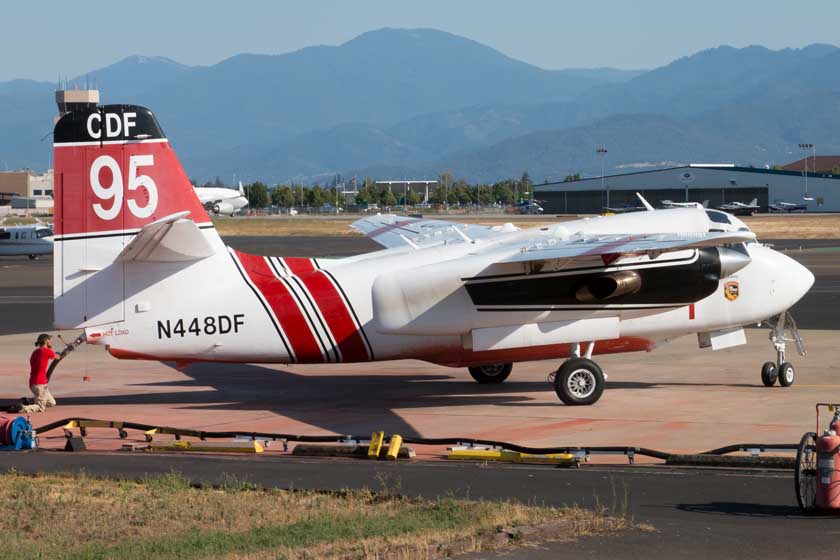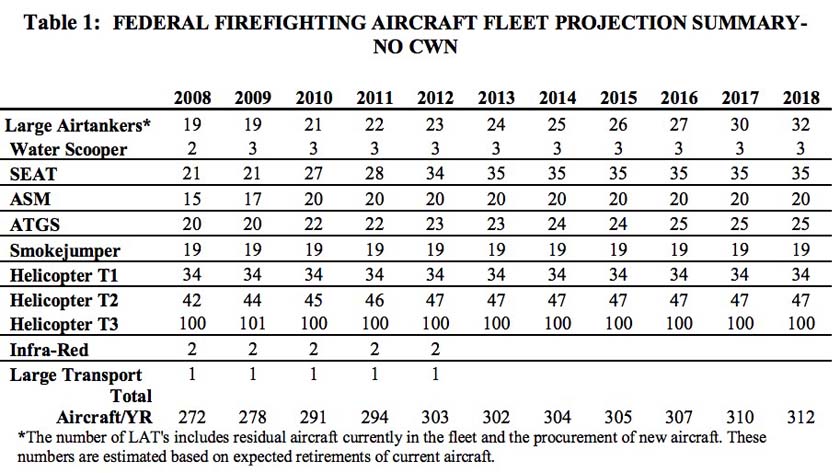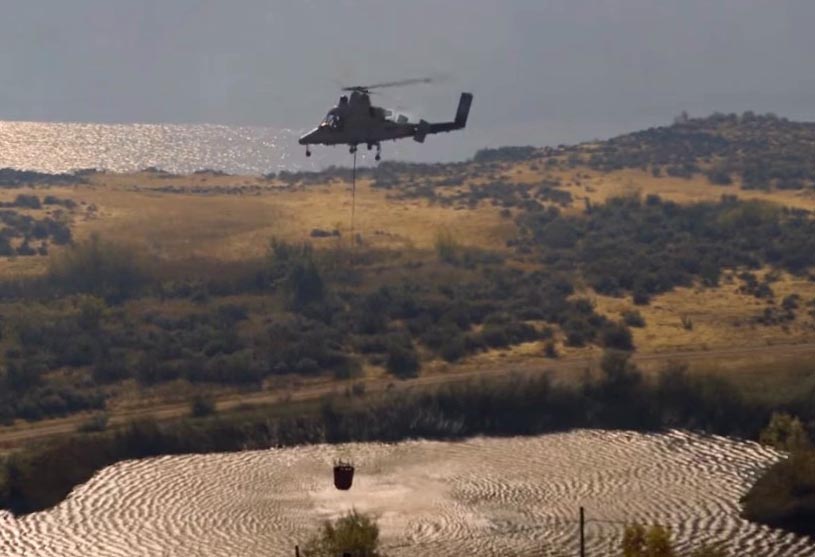Here is an interesting video report about the use of helicopters on the 27,238-acre “>Burro Fire northeast of Tucson, Arizona.
Thanks and a tip of the hat go out to Mark.
Typos or errors, report them HERE.
Here is an interesting video report about the use of helicopters on the 27,238-acre “>Burro Fire northeast of Tucson, Arizona.
Thanks and a tip of the hat go out to Mark.
Typos or errors, report them HERE.
Above: MAFFS 6 being prepared for activation in California. In the foreground is an air compressor used to fill the compressed air tanks on MAFFS aircraft. Photo credit: 146 Airlift Wing.
(Originally published at 7:29 p.m. MDT July 10, 2017)
California has activated two National Guard C-130 aircraft to assist with combating wildfires in the state. The Modular Airborne FireFighting Systems (MAFFS) that convert a military aircraft into an air tanker can be installed in a C-130 in a matter of hours. The units hold up to 3,000 gallons of water or retardant that is forced out of the tanks by compressed air. The two C-130’s are with the 146 Airlift Wing at Channel Islands in Southern California.
The MAFFS program consists of eight units located at four military bases in the western United States — Channel Islands, Cheyenne, Colorado Springs, and Reno. Each base has two of systems except for the new kid on the block, Reno — one of their two MAFFS is being used by a C-130 that is in the process of being transferred from the Coast Guard to the U.S. Forest Service.
The concept behind the MAFFS is to have surge capacity. The units can be activated when ongoing wildfires reduce the ability of the 20 large air tankers on federal exclusive use contracts to respond to new initial attack and extended attack fires.
Governors in the four states have the authority to activate their one or two National Guard MAFFS as needed. The National Interagency Fire Center can also activate them.
In the video below MAFFS 6 is being tested after it was installed in the C-130 at Channel Islands. Normally they drop fire retardant, rather than water.
@146AirliftWing troops activated thru @Cal_OES and @CALFIRE worked thru the night to ready #MAFFS C130s to fly. pic.twitter.com/5dCv9nUooM
— 146thAirliftWing (@146AirliftWing) July 10, 2017
I cruised through Wind Cave National Park today while firefighters were dealing with the Prairie Dog Fire that burned a couple of acres (at last count) more or less in the center of the park. It was burning in timber and grass, slowly, since there is still a lot of greenness left in the herbaceous vegetation. There was a great deal of lightning yesterday, and this little blaze was a result.
The Eurocopter AS350 B3, assigned to Custer, SD and operated by Trans Aero LTD was on scene parked near the intersection of US Hwy. 385 and State Highway 87. I grabbed a few pictures of it, and a grainy shot of the fire that was a mile or more away. Trans Aero names all of their ships, and since this one was in Italy when they purchased it, the name that stuck was “The Italian Job”, registered in the US as N357TA.
Almost exactly a year ago we shot photos of the same helicopter and many other aircraft at the Red Canyon Fire southwest of Pringle, South Dakota.
Tim Crippin sent us these photos of Tankers 95 that was reloading out of Medford on the 4th of July for the Klamath Fire near the Tree of Heaven Campground in Siskiyou County, California. It and Tanker 94 flew out of Medford for about 2.5 hours before heading back to Redding, Tim said.
Above: A Type 1 helicopter, an Air-Crane, makes a drop on the Draw Fire in South Dakota, July 24, 2012. Photo by Bill Gabbert.
When the U.S. Forest Service reduced the number of Type 1 helicopters on exclusive use (EU) contracts by 18 percent earlier this year, we were not aware of any significant outcry among influential individuals who care about wildfire preparedness.
For years there had been 34 Type 1 helicopters on EU. On February 26, 2016 the USFS issued another round of EU contracts to 13 companies for a total of 34 Type 1 firefighting helicopters. The contracts were initially effective for one year, through April 30, 2017, with the possibility of three one-year renewal option periods.
But this Spring six of those helicopters were not renewed for the 2017 wildfire season, reducing the number to 28. There are at least a couple of dozen other Type 1 ships that have Call When Needed (CWN) contracts, but they can’t be depended upon to always be available, waiting around at no cost for the phone to ring and a contract to be activated. They will seek other employment when not on an EU contract. And CWN aircraft cost the government more to operate than EU resources.
Last week Rep. Adam Schiff (D-Burbank), sent a letter to U.S. Forest Service Chief Tom Tidwell expressing concern over the decision by the Forest Service to change six Type 1 helicopters from EU to CWN.
“As we enter peak fire season in Southern California, I would like to know the implications of this decision on readiness and speed of response in the event of a fire, since as you are well aware, the speed of response can be the difference between a destructive wildfire and a controlled event,” Rep. Schiff wrote in the letter.
In March we asked Jennifer Jones, a spokesperson for the U.S. Forest Service, why there was a reduction in the number of Type 1 helicopters:
At this time, the agency has determined 28 to be the appropriate number of Type 1 helicopters on EU contracts given current types and numbers of other aircraft in the fleet. This is in line with the 2012 Airtanker Modernization Strategy.
However, that Airtanker Modernization Strategy does not make an independent recommendation on the number of helicopters or air tankers that are needed. But it refers to a study conducted from 2007 to 2009, the NIAC Interagency Aviation Strategy, which concluded that the optimum number of Type 1 helicopters on EU was 34. It also recommended a total of 35 air tankers by 2018, which included three water-scooping air tankers.

Above: screengrab from the video shot by Lou Boyer of a Boeing 787 and its incredible contrail.
Lou Boyer was in the cockpit of a Boeing 747 over eastern Russia early one morning when he saw a Boeing 787 crossing 1,000 below him. That was not unusual, of course, but the contrail it left behind was extraordinary. Mesmerizing, you might say.
We don’t know for sure what camera he used, but he often shoots with a Sony AX53 camcorder.
Mr. Boyer, who often posts videos of aircraft and snakes, gave us permission to use this one.
(Enjoy the video, and feel free to leave comments, but don’t even THINK about mentioning ch em tra ils!)
Above: A Yamaha helicopter drone used in the Napa Valley to spray a fungicide over a vineyard. Screen grab from the Yamaha video below.
Yamaha helicopter drones have been used for 25 years in Japan for spraying chemicals over rice and other crops. Recently the company has been testing the aircraft in California’s Napa Valley to spray a preventative fungicide to keep powdery mildew from forming on grapes.
It makes you wonder if a helicopter drone would ever be used to spray or drop water or retardant on a wildfire. In 2015 Lockheed Martin and K-Max demonstrated the use of a full size drone, an optionally-piloted K-MAX, to haul external loads and drop water.

This article first appeared on Wildfire Today.

A man was arrested in Prescott, Arizona for flying a drone into the airspace near the Goodwin Fire that as of Friday had burned over 25,000 acres southeast of the city.
Gene Alan Carpenter, a 54-year-old from Prescott Valley, is accused of endangering 14 aircraft and ground personnel with a “substantial risk of imminent death or physical injury” by flying a drone near or over the fire. All firefighting aircraft had to be grounded for about an hour on Wednesday, June 28.
In 2016 Arizona passed a law making it illegal to fly a drone that interfered with emergency or law enforcement efforts. It is likely that a Temporary Flight Restriction was in effect over the fire at that time which would make it a violation of federal law for any aircraft to invade the space without permission.
If a drone collided with a firefighting helicopter or fixed wing aircraft it could cause great harm especially if it hit a windshield or engine. And if the aircraft crashes, killing the pilots, firefighters on the ground would also be in danger from the falling debris.
The safety of firefighters is compromised when all of the helicopters, lead planes, air attack, and air tankers are grounded, preventing the aircraft from slowing the fire so that firefighters can move in and construct fireline. When aircraft and ground personnel disengage, homes and private property could be destroyed that might otherwise have been saved with an aggressive firefighting attack. Some air tankers when grounded by an intruding aircraft can’t land with a full load of retardant, so they have to jettison it, wasting thousands of dollars worth of the product.
On June 24 multiple witnesses reported seeing a man operating a drone at the Goodwin Fire standing next to a white van.
Below is an excerpt from an article at 12news:
The sheriff’s office said based on witness information, drone descriptions and photos from Carpenter’s website showing drone views of the Goodwin Fire, deputies began searching for him.
Carpenter was arrested Friday afternoon after an off-duty deputy spotted his van on Willow Creek Road in Prescott. The drone was found in the van and seized.
Detectives are meeting with federal officials Monday to discuss additional charges based on the federal statutes regarding temporary flight restrictions.
Mr. Carter is in custody at Yavapai County facilities at Camp Verde, Arizona charged with 14 counts of endangerment, all felonies, and one misdemeanor.